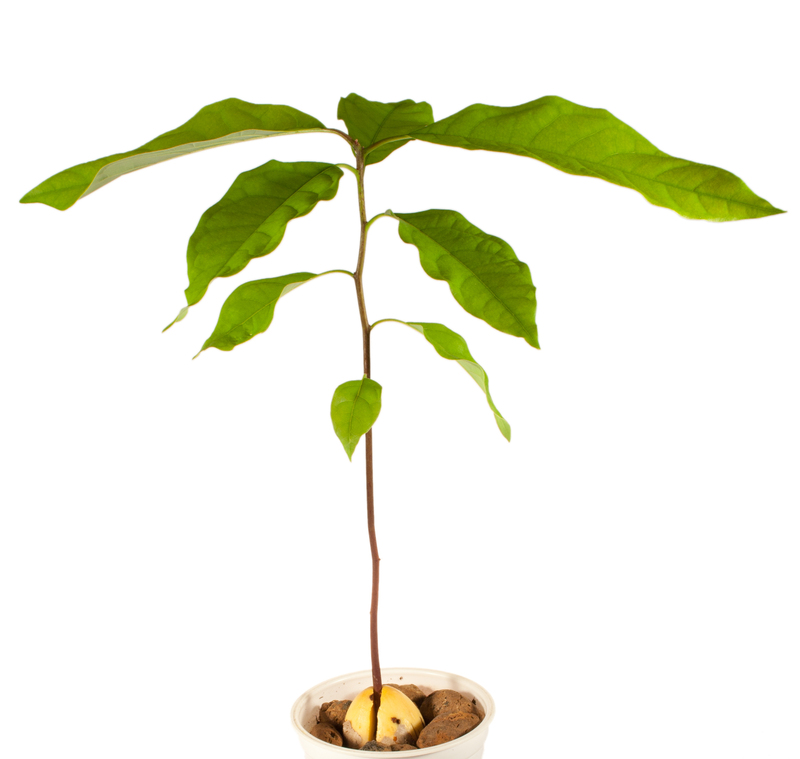Turning Waste into a Nutrient Goldmine
Posted on 28/09/2025
Turning Waste into a Nutrient Goldmine: Unlocking the Value of Organic Waste
Waste is often seen as a problem that needs to be solved or disposed of as quickly as possible. However, a change of perspective reveals an untapped potential--waste as a resource. By turning waste into a nutrient goldmine, we can revolutionize our approach to agriculture, environmental sustainability, and even economic development. In this comprehensive article, we will explore how organic waste, when managed smartly, can become a valuable source of nutrients and contribute to a sustainable future.
Understanding Organic Waste and Its Potential
Organic waste refers to any material that is biodegradable and comes from plants or animals. Examples include food scraps, agricultural residues, yard trimmings, and even certain types of industrial by-products. Unfortunately, this waste often ends up in landfills where it decomposes anaerobically, releasing greenhouse gases and squandering valuable nutrients. Instead of being lost, these nutrients can be reclaimed, reused, and returned to the ecosystem.
Why Turn Waste into a Nutrient Goldmine?
- Environmental Protection: Diverting organic waste from landfills reduces methane emissions--a potent greenhouse gas.
- Soil Enrichment: Organic matter improves soil structure, fertility, and water retention.
- Resource Efficiency: Recycling nutrients from waste reduces dependency on synthetic fertilizers.
- Economic Opportunities: Waste valorization generates green jobs and saves costs for municipalities and farmers.

The Science Behind Transforming Waste to Nutrients
The key to turning waste into a nutrient mine lies in harnessing decomposition processes. Organic matter naturally breaks down through microbial action. By optimizing this process, we can convert waste into valuable products such as compost, biofertilizers, and organic soil amendments.
Composting: Nature's Recycling System
Composting is a controlled, aerobic (oxygen-intense) process that transforms organic waste into a rich, soil-like humus. This "black gold" is teeming with plant-available nutrients and beneficial microbes.
- Types of Composting:
- Backyard Composting: Suitable for household food scraps and yard trimmings.
- Vermicomposting: Uses earthworms to accelerate breakdown and produce nutrient-rich castings.
- Industrial Composting: Scales up the process for municipalities and agribusinesses.
Benefits of Composting
- Reduces landfill burden
- Recycles nutrients to the soil
- Suppresses plant diseases and pests
- Enhances soil biodiversity
Anaerobic Digestion and Biogas Production
Unlike composting, anaerobic digestion occurs in the absence of oxygen, breaking down organic matter into biogas (a mix of methane and carbon dioxide) and a nutrient-rich digestate. This technology is particularly useful for treating food waste, animal manure, and wastewater sludge.
- Energy Generation: Biogas can be used for heating, electricity, or vehicle fuel.
- Fertilizer Value: The residual digestate is an excellent organic fertilizer, abundant in nitrogen, phosphorus, and potassium.
Industrial Innovations: Advancing the Nutrient Cycle
Black Soldier Fly Larvae: Nature's Bioconverters
Using insects to process waste may sound futuristic, but black soldier fly larvae are already being deployed on an industrial scale. These larvae devour organic waste rapidly, transforming it into high-protein animal feed and nutrient-rich frass (insect manure), which serves as a potent soil enhancer.
- Reduces waste volume significantly
- Creates valuable by-products for agriculture
- Supports circular economy principles
Biochar: Turning Waste Biomass into a Soil Booster
Biochar is produced by heating organic waste in a low-oxygen environment (pyrolysis). This stabilizes carbon, locks nutrients into a stable matrix, and produces a charcoal-like substance that can dramatically improve soil fertility, water retention, and microbial activity.
- Long-term soil carbon storage
- Acts as a habitat for soil microbes
- Enhances plant growth and resilience
From Household to Farm: Practical Approaches to Nutrient Recovery
How Can Homes Contribute?
- Start home composting: Separate food scraps and yard waste for small-scale nutrient recycling.
- Bokashi bins: Ferment kitchen waste quickly for use in gardens.
- Support community composting initiatives or urban gardening projects utilizing local biofertilizers.
Waste Management on the Farm
Farms generate immense organic waste from crop residues, manure, and processing by-products. By integrating waste conversion systems, farms can:
- Reduce dependence on chemical fertilizers
- Generate renewable energy
- Close the nutrient loop on-site
Popular methods include:
- Aerobic composting of crop residues
- Anaerobic digestion of manure for energy and fertilizer
- Production of compost teas and organic liquid fertilizers
Urban and Municipal Approaches: Scaling Up the Nutrient Recovery Revolution
City Composting Programs
Many cities are adopting zero-waste strategies, promoting curbside organic waste collection for centralized composting or anaerobic digestion.By transforming urban food and yard waste into high-quality compost, municipalities can foster green spaces, urban agriculture, and a healthier local food system.
Innovative Partnerships
- Collaborations with private waste processors and energy firms
- Recognition programs for businesses practicing food waste recovery
- Direct links between restaurants, farms, and compost producers
The Economic Value of Viewing Waste as a Nutrient Goldmine
Globally, billions of dollars' worth of nutrients are discarded as waste each year. By capturing these nutrients through composting, biogas production, and other innovative techniques, communities can:
- Lower fertilizer and waste disposal costs
- Generate income from the sale of compost, biochar, and organic amendments
- Expand green jobs in waste processing and sustainable agriculture
Entrepreneurs and startups are already creating value chains around nutrient-rich products--from premium compost to organic hydroponic fertilizers--proving that turning waste into a nutrient goldmine is both environmentally essential and economically profitable.
Barriers and Solutions: Unlocking the Full Potential of Organic Waste
Common Challenges
- Lack of awareness: Many people and businesses still perceive waste as useless.
- Limited collection infrastructure for segregating organic from inorganic waste
- Concerns about odor, pests, and contamination
- Need for technical expertise in processing methods
How to Overcome These Challenges
- Public education on the environmental and economic benefits of waste-to-nutrient conversion
- Investment in modern waste collection and processing infrastructure
- Clear policy support and incentives for composting, biogas, and other valorization initiatives
- Small-scale pilot projects that can be scaled up based on success
Environmental Impact: Regenerative Benefits of Nutrient Recovery
When we harness the value of organic waste, the environmental returns are immense. Enriching soils with recovered nutrients restores fertility, prevents erosion, and enables regenerative farming practices that sequester carbon and support biodiversity. Moreover:
- Reduced need for chemical inputs minimizes waterway pollution and groundwater contamination.
- Less landfill usage means decreased methane generation and longer landfill lifespans.
- The circular economy approach conserves resources and reduces demand for new materials.
In essence, treating organic waste as a nutrient goldmine promotes a healthier planet and more resilient communities.
Case Studies: Success Stories in Waste-to-Nutrient Innovation
Sanjeevani Compost, India
In rural India, self-help groups have established local composting centers transforming cattle manure and kitchen scraps into high-quality organic fertilizer. The project not only improves crop yields but also increases incomes and reduces chemical residues in food.
Vermicompost Revolution in California
California's urban farms have implemented vermicomposting using red wigglers to digest vast amounts of city food scraps. The resulting worm castings are sold as premium organic soil amendments to gardeners and urban farmers.
European Biochar Projects
From Denmark to Germany, large-scale pyrolysis plants process municipal green waste into biochar, sequestering carbon and producing high-grade soil enhancers for commercial agriculture, winemakers, and urban parks alike.

Simple Steps for Individuals: How You Can Start Turning Waste into Nutrients
- Start by separating your organic waste from plastics and metals.
- Set up a small compost bin or wormery at home or in your community.
- Support local farmers' markets and businesses that use organic waste valorization.
- Advocate for better municipal waste management practices and policies.
- Educate neighbors, friends, and colleagues about the value of composting and nutrient cycling.
Even small actions, when multiplied across thousands of households, can spark a transformative shift in how we view and utilize waste.
The Future: Scaling up the Nutrient Goldmine Revolution
Turning waste into a nutrient goldmine is more than a buzzword; it's a blueprint for a future where resource flows are circular, ecological damage is minimized, and human civilization thrives in balance with nature. By investing in innovative technologies, embracing circular economy models, and empowering communities to take action, we can unlock the full value of organic waste.
- Rethink waste as a valuable input, not a headache
- Be champions of composting, biogas, and biological recycling in your homes and communities
- Support policies and businesses that prioritize nutrient recovery and circular resource use
The next time you throw away a banana peel or grass clippings, remember--you are literally holding the seeds of soil fertility, food security, and environmental restoration in your hands. Let's start turning our waste into a true nutrient goldmine!

